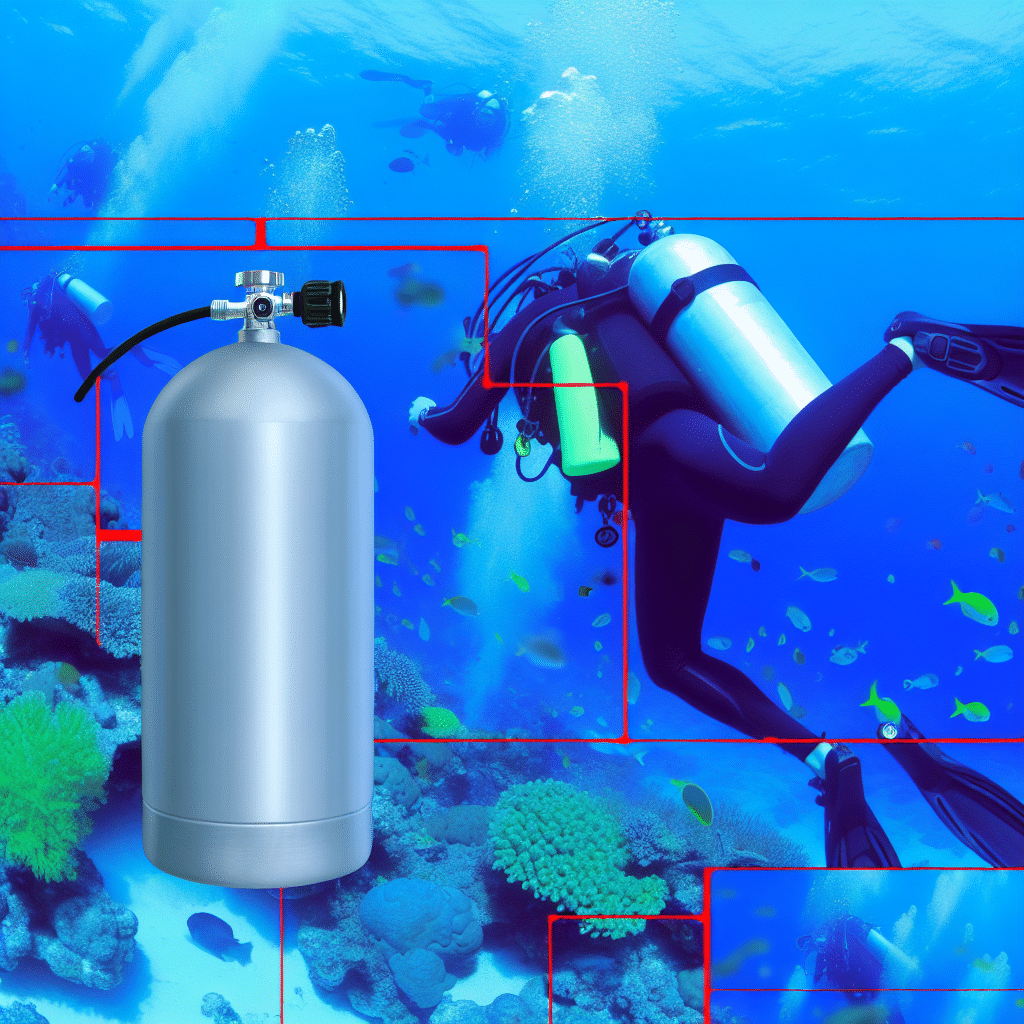Scuba diving is a thrilling adventure that allows you to explore the underwater world’s hidden beauty. But before you can delve into the abyss, there’s one crucial piece of equipment that you cannot overlook: the scuba diving tank. Often the unsung hero of a diver’s gear, the scuba diving tank is your lifeline beneath the waves, providing the vital air supply needed for your underwater journey.

What is a Scuba Diving Tank?
A scuba diving tank, often referred to as a diving cylinder, is a high-pressure vessel used to store and deliver the breathing gas required by divers. Typically made from aluminum or steel, these tanks are engineered to withstand the immense pressures encountered underwater. Most tanks are filled with compressed air, but other gas mixtures, such as Nitrox or Trimix, are also used depending on the diving conditions and the diver’s certification.
Parts of a Scuba Diving Tank
Understanding the components of a scuba diving tank is essential for safe diving:
– **Cylinder**: The cylindrical container holds the compressed gas.
– **Valve**: This controls the release of the gas.
– **Boot**: A protective base that allows the tank to stand upright without damaging the bottom.
How to Choose the Right Scuba Diving Tank?
Material: Aluminum vs. Steel
One of the first decisions you’ll face is whether to choose an aluminum or steel tank.
– **Aluminum Tanks**: Generally lighter and more affordable, aluminum tanks are widely used, particularly for recreational diving. However, they are more buoyant, which can influence your buoyancy control underwater.
– **Steel Tanks**: These are typically more expensive but offer better durability and a higher capacity for compressed gas. Steel tanks are less buoyant, which can be beneficial for maintaining neutral buoyancy.
Capacity and Size
The size of the tank impacts the amount of air it can hold, which in turn affects how long you can stay underwater. Common sizes include 50, 80, and 100 cubic feet. Larger tanks, while offering more air, are also heavier and can be more cumbersome to manage.
How to Maintain Your Scuba Diving Tank?
Proper maintenance is critical for the longevity and safety of your scuba diving tank.
Regular Inspections
Both visual inspections (usually annually) and hydrostatic testing (every five years) are mandated to ensure that the tank is in good condition. These inspections check for signs of corrosion, cracks, or other damages that could compromise the tank’s integrity.
Cleaning
It’s essential to keep your tank clean, both inside and out. For the exterior, a rinse with fresh water after each dive can help prevent saltwater corrosion. For the interior, a professional cleaning may be needed if moisture or contaminants are detected.
Storage
Store your tank in a cool, dry place away from direct sunlight. Keeping a small amount of pressure in the tank can prevent moisture from entering and causing internal corrosion.
Safety Tips for Using a Scuba Diving Tank
Check Your Tank Before Each Dive
Always inspect your tank before diving. Check the pressure gauge to ensure it’s fully charged, and examine the valve and O-ring for any signs of wear or damage.
Never Dive Alone
While this is a general scuba diving rule, it’s worth reiterating. Always dive with a buddy for added safety. Your scuba diving tank is crucial, but so is having someone to assist you in case of any issues.
Know Your Limits
Understand your limits and those of your equipment. Overexertion and ignoring safety protocols can lead to dangerous situations. Be aware of your air consumption rate and always plan your dive with adequate air reserves.
Advanced Scuba Diving Tanks: What Else is Out There?
Nitrox Tanks
For divers looking to extend their bottom time, Nitrox tanks (enriched air) are a popular option. With a higher oxygen content and lower nitrogen levels, Nitrox reduces the risk of nitrogen narcosis and decompression sickness.
Trimix Tanks
Used primarily in technical diving, Trimix tanks contain a mix of oxygen, nitrogen, and helium. These tanks are designed for deep dives where conventional air mixtures could be dangerous.
Conclusion: The Lifeline of Your Underwater Adventure
Whether you are a seasoned diver or a novice about to take your first plunge, the importance of a reliable scuba diving tank cannot be overstated. This essential piece of equipment provides the air that sustains you in the mesmerizing underwater world. By choosing the right tank, maintaining it rigorously, and following safety protocols, you can ensure that every dive is a safe and enjoyable adventure.
So next time you gear up for a dive, take a moment to appreciate your scuba diving tank. After all, it’s not just a tank—it’s your gateway to exploring the wonders hidden beneath the waves.



